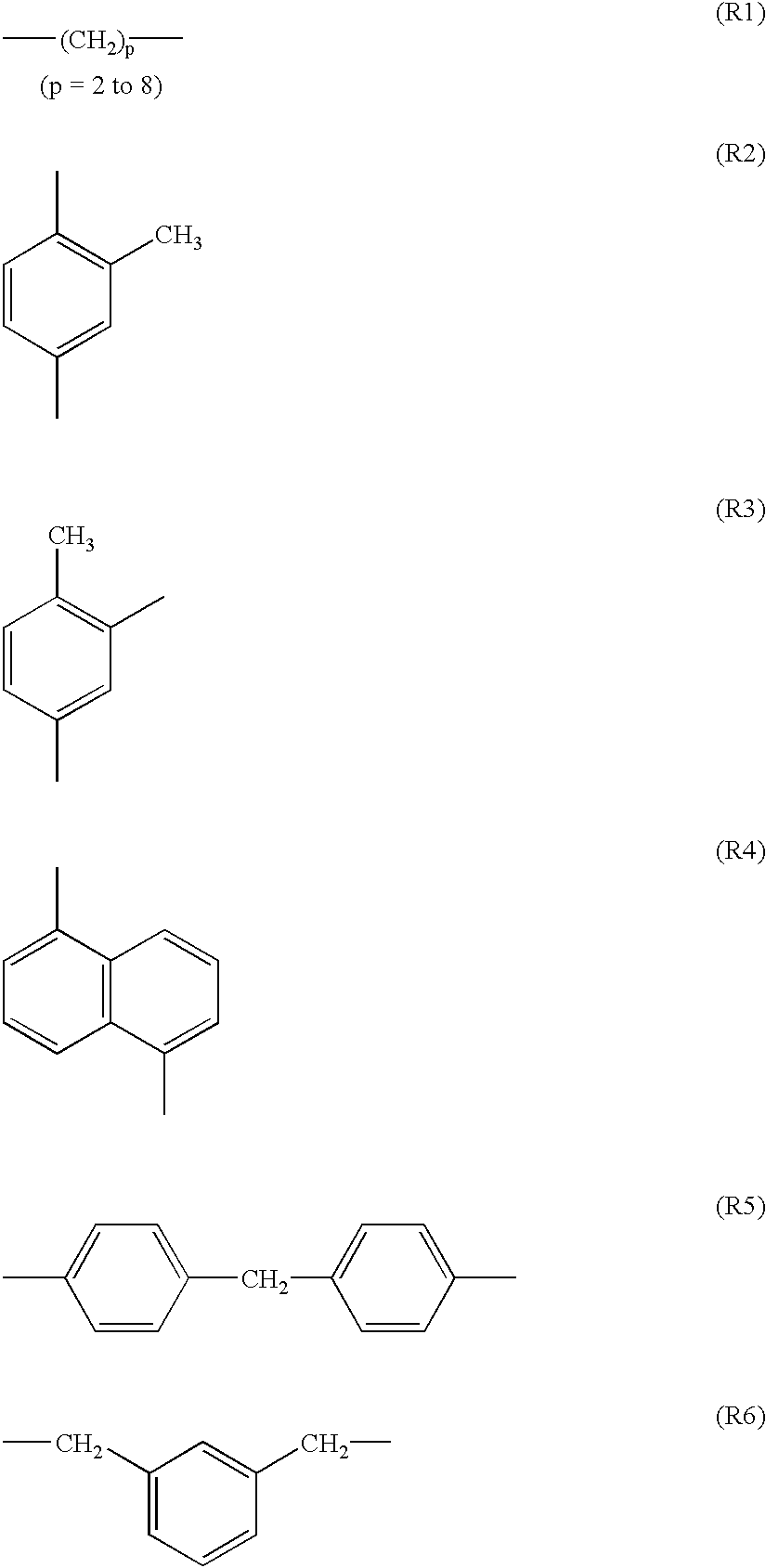Optical compensating sheet, polarizing plate, and liquid-crystal display
a technology of optical compensating sheet and liquid crystal display, which is applied in the direction of polarising elements, thin material processing, instruments, etc., can solve the problems of reducing the transmittance of the image, so as to achieve excellent durability and increase the transmittance
- Summary
- Abstract
- Description
- Claims
- Application Information
AI Technical Summary
Benefits of technology
Problems solved by technology
Method used
Image
Examples
example 1
[0486] The following components were placed in a mixing tank, heated and stirred to dissolve, to prepare a cellulose acetate solution.
1 Cellulose acetate solution Cellulose acetate (acetic acid 100 weight parts content: 60.9%) Triphenyl phosphate (plasticizer) 7.8 weight parts Biphenyldiphenyl phosphate 3.9 weight parts (plasticizer) Methylene chloride (first solvent) 300 weight parts Methanol (second solvent) 54 weight parts 1-Butanol (third solvent) 11 weight parts
[0487] In another mixing tank, 16 weight parts of the following retardation increasing agent, 80 weight parts of methylene chloride and 20 weight parts of methanol were placed, heated and stirred, to prepare a retardation increasing agent solution.
[0488] The cellulose acetate solution (474 weight parts) and the retardation increasing agent solution (25 weight parts) were mixed and stirred well to prepare a dope. The prepared dope contained the retardation increasing agent in the amount of 5.5 weight parts based on 100 we...
example 2
[0493] The procedure of Example 1 was repeated except that 474 weight parts of the cellulose acetate solution and 56 weight parts of the retardation increasing agent solution were mixed (7.8 weight parts of the retardation increasing agent was used based on 100 weight parts of cellulose acetate) to prepare a dope, and except that the formed film was laterally stretched by 12%. Thus, a cellulose acetate film (optical compensatory sheet: KH-02) was prepared and evaluated. The results are set forth in Table 1.
[0494] The obtained film was immersed in a 1.5 N aqueous KOH solution for 5 minutes (40.degree. C.), neutralized with sulfuric acid, washed with pure water, and dried. The surface energy of the thus-treated film was measured according to the contact angle method, to find 68 mN / m.
[0495] The thickness of the prepared film was measured at 100 points in an area of 1 m.times.1 m by means of a digital film thickness gauge (K-402B, Anristu Co., Ltd.), and thereby it was found that the av...
example 3
[0502] The procedure of Example 1 was repeated except that 6.0 weight parts of the retardation increasing agent was used based on 100 weight parts of cellulose acetate to prepare a dope, and except that the formed film was laterally stretched by 30%. Thus, a cellulose acetate film (optical compensatory sheet: KH-03) was prepared and evaluated. The results are set forth in Table 1.
[0503] The obtained film was immersed in a 2.0 N aqueous KOH solution for 2 minutes (25.degree. C.), neutralized with sulfuric acid, washed with pure water, and dried. The surface energy of the thus-treated film was measured according to the contact angle method, to find 63 mN / m.
[0504] The thickness of the prepared film was measured at 100 points in an area of 1 m.times.1 m by means of a digital film thickness gauge (K-402B, Anristu Co., Ltd.), and thereby it was found that the average thickness was 38.5 .mu.m and that the standard deviation was 1.4 .mu.m.
PUM
 Login to View More
Login to View More Abstract
Description
Claims
Application Information
 Login to View More
Login to View More - R&D
- Intellectual Property
- Life Sciences
- Materials
- Tech Scout
- Unparalleled Data Quality
- Higher Quality Content
- 60% Fewer Hallucinations
Browse by: Latest US Patents, China's latest patents, Technical Efficacy Thesaurus, Application Domain, Technology Topic, Popular Technical Reports.
© 2025 PatSnap. All rights reserved.Legal|Privacy policy|Modern Slavery Act Transparency Statement|Sitemap|About US| Contact US: help@patsnap.com



